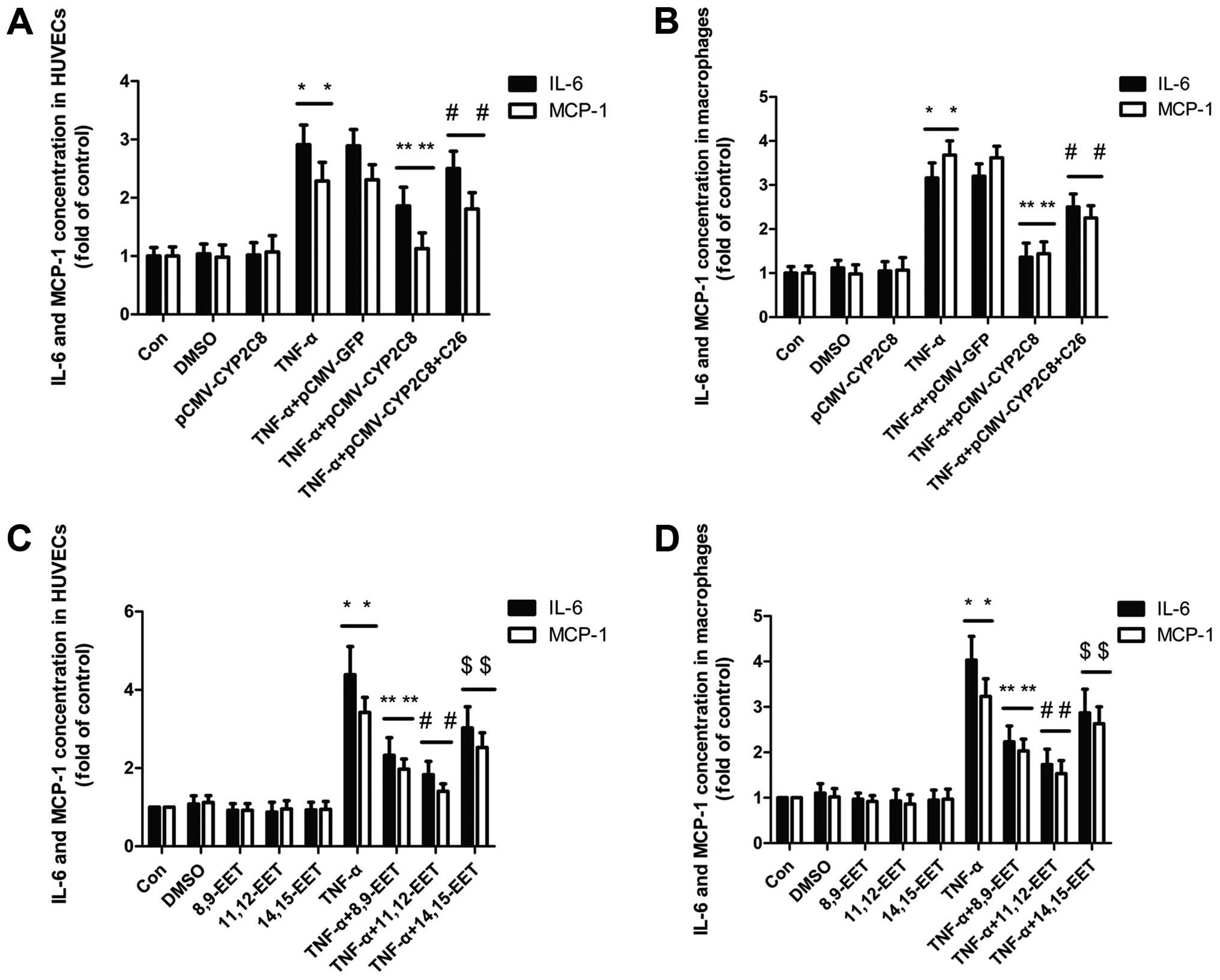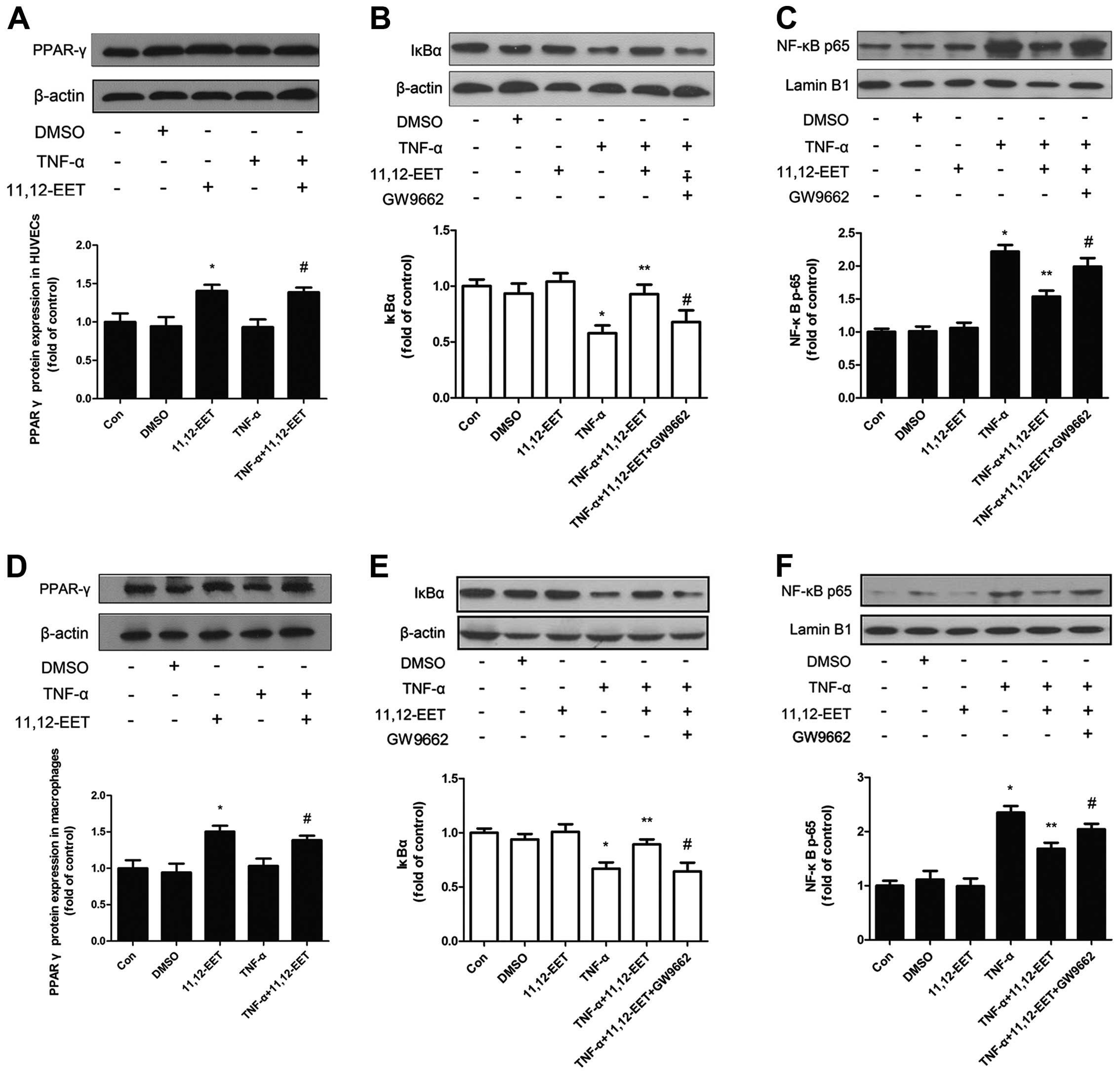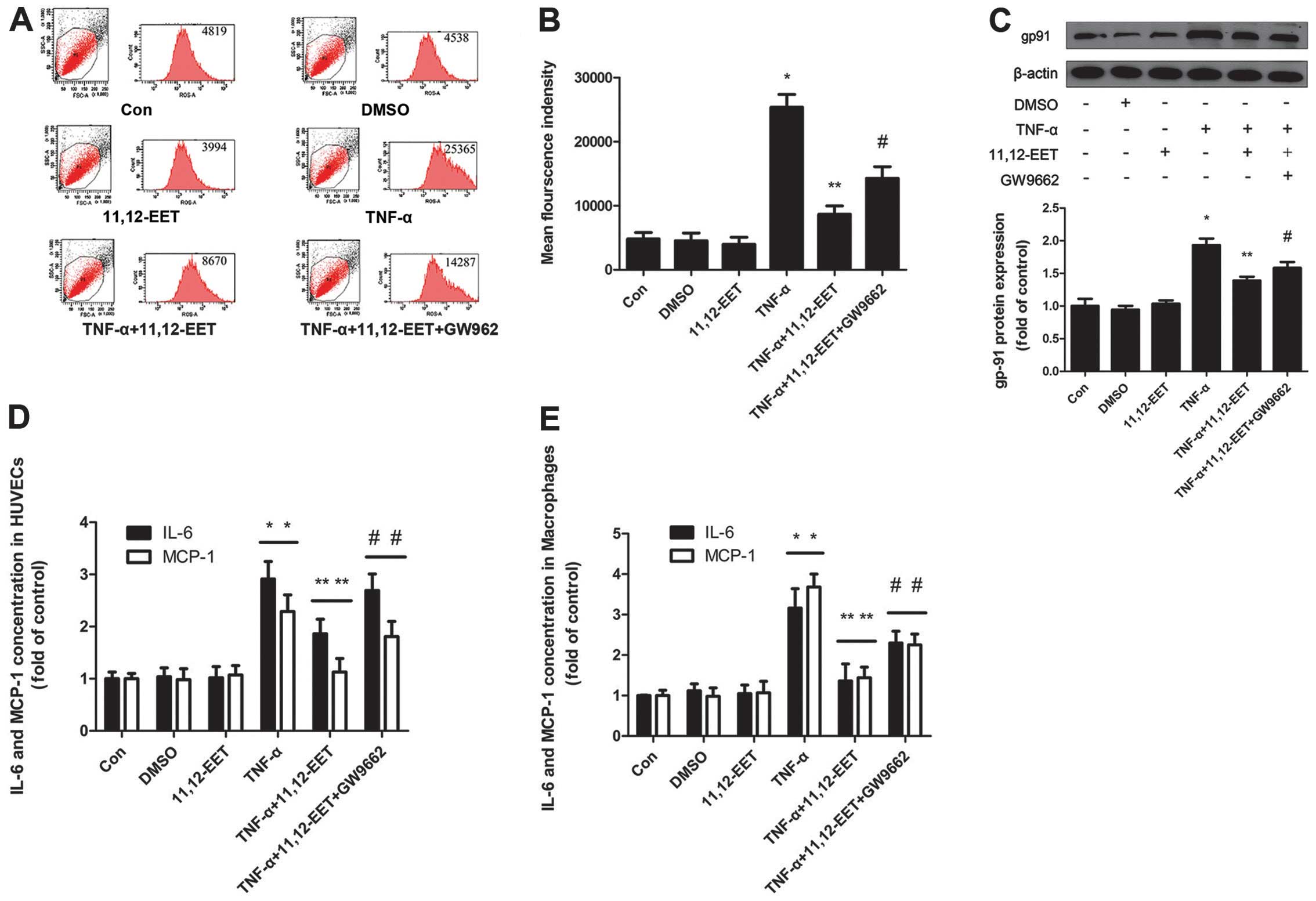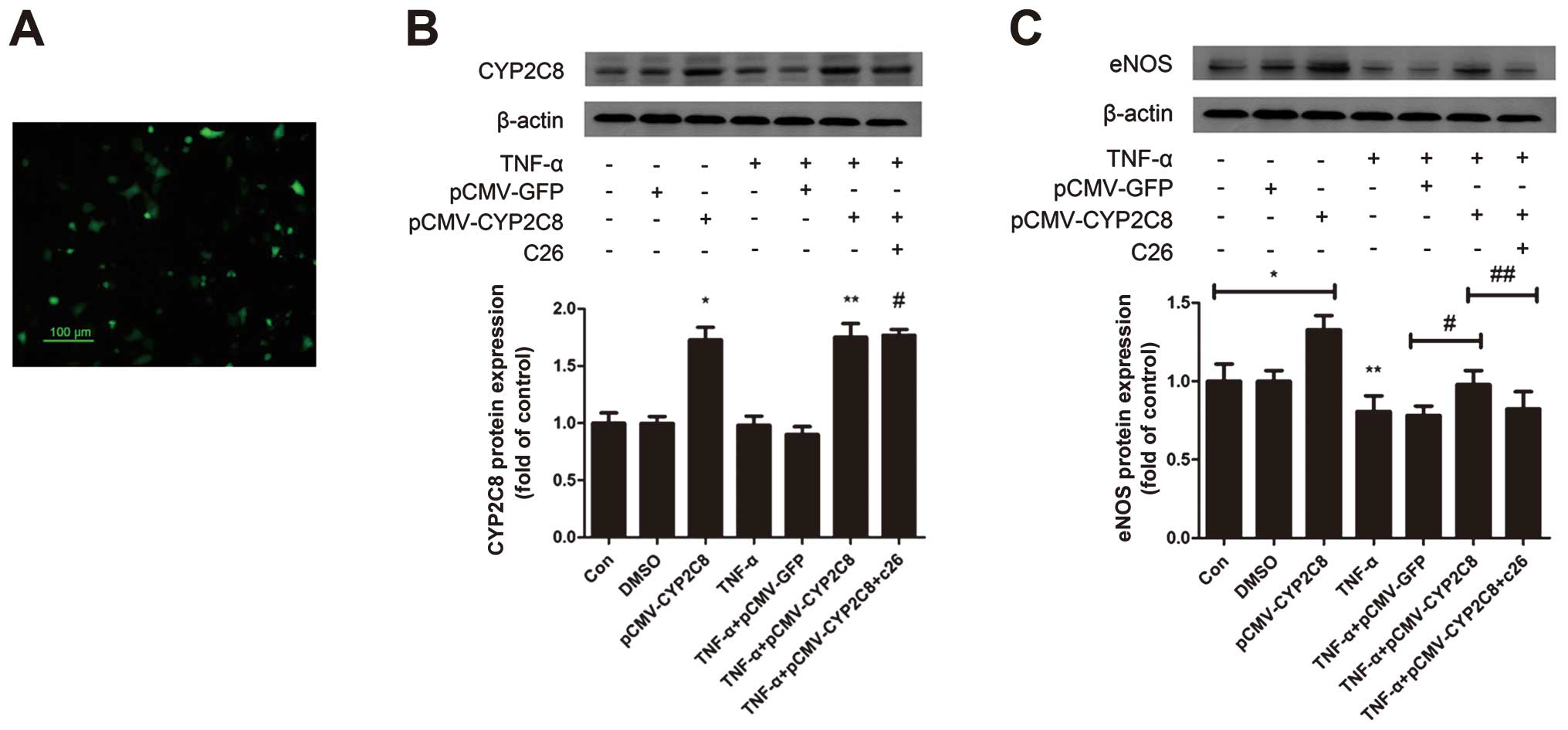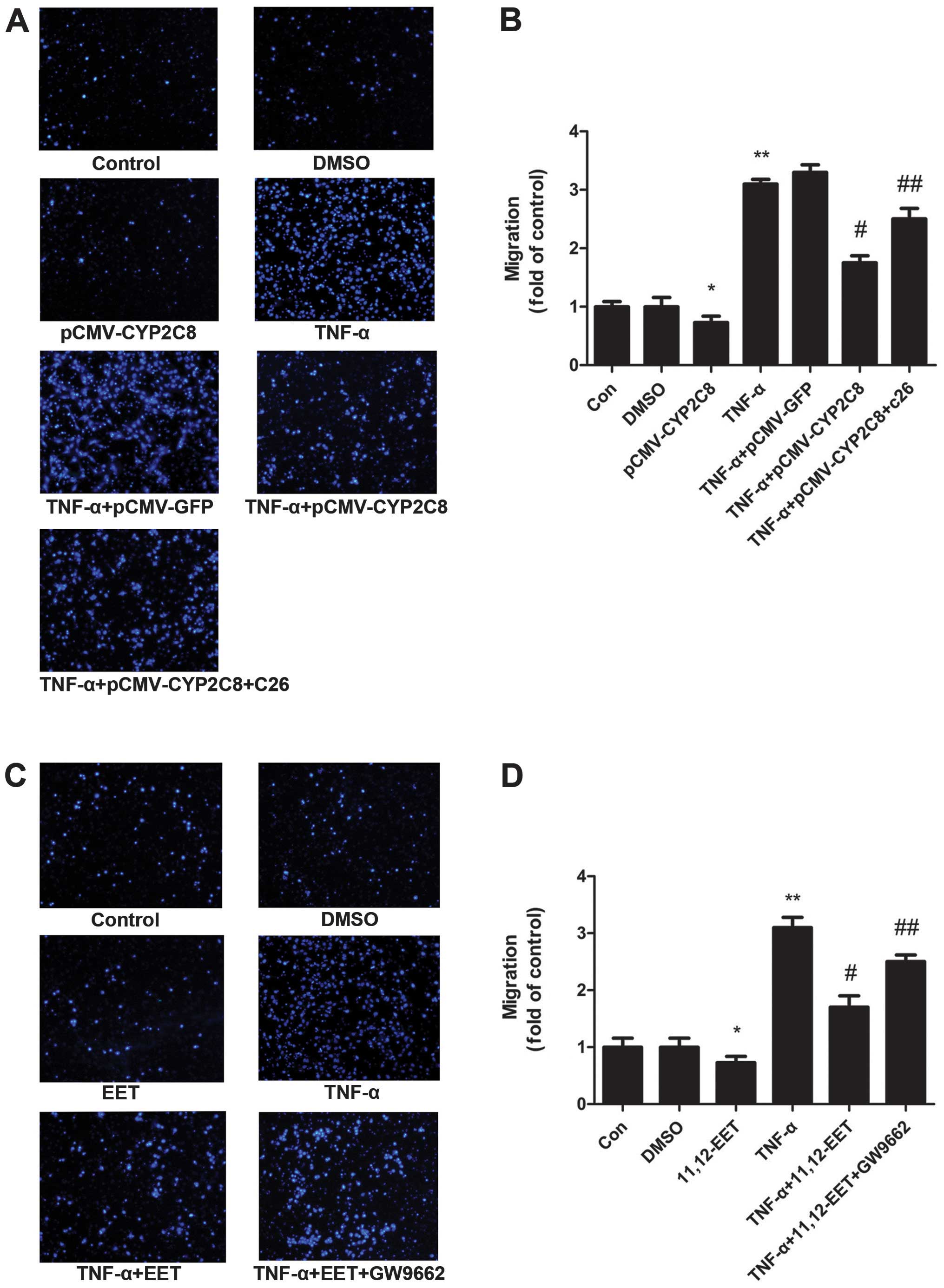|
1
|
Ross R: Atherosclerosis - an inflammatory
disease. N Engl J Med. 340:115–126. 1999. View Article : Google Scholar
|
|
2
|
Guzik TJ, Korbut R and Adamek-Guzik T:
Nitric oxide and superoxide in inflammation and immune regulation.
J Physiol Pharmacol. 54:469–487. 2003.PubMed/NCBI
|
|
3
|
Cai H: Hydrogen peroxide regulation of
endothelial function: origins, mechanisms, and consequences.
Cardiovasc Res. 68:26–36. 2005. View Article : Google Scholar : PubMed/NCBI
|
|
4
|
Madamanchi NR, Hakim ZS and Runge MS:
Oxidative stress in atherogenesis and arterial thrombosisthe
disconnect between cellular studies and clinical outcomes. J Thromb
Haemost. 3:254–267. 2005. View Article : Google Scholar : PubMed/NCBI
|
|
5
|
Forstermann U: Oxidative stress in
vascular disease: causes, defense mechanisms and potential
therapies. Nat Clin Pract Cardiovasc Med. 5:338–349. 2008.
View Article : Google Scholar : PubMed/NCBI
|
|
6
|
Park JG and Oh GT: The role of peroxidases
in the pathogenesis of atherosclerosis. BMB Rep. 44:497–505. 2011.
View Article : Google Scholar
|
|
7
|
Cominacini L, Pasini AF, Garbin U, et al:
Oxidized low density lipoprotein (ox-LDL) binding to ox-LDL
receptor-1 in endothelial cells induces the activation of NF-κB
through an increased production of intracellular reactive oxygen
species. J Biol Chem. 275:12633–12638. 2000.
|
|
8
|
Miller YI, Viriyakosol S, Binder CJ,
Feramisco JR, Kirkland TN and Witztum JL: Minimally modified LDL
binds to CD14, induces macrophage spreading via TLR4/MD-2, and
inhibits phagocytosis of apoptotic cells. J Biol Chem.
278:1561–1568. 2003. View Article : Google Scholar : PubMed/NCBI
|
|
9
|
Miller YI, Viriyakosol S, Worrall DS,
Boullier A, Butler S and Witztum JL: Toll-like receptor 4-dependent
and -independent cytokine secretion induced by minimally oxidized
low-density lipoprotein in macrophages. Arterioscler Thromb Vasc
Biol. 25:1213–1219. 2005. View Article : Google Scholar : PubMed/NCBI
|
|
10
|
Bae YS, Lee JH, Choi SH, et al:
Macrophages generate reactive oxygen species in response to
minimally oxidized low-density lipoprotein: toll-like receptor 4-
and spleen tyrosine kinase-dependent activation of NADPH oxidase 2.
Circ Res. 104:210–218. 2009. View Article : Google Scholar
|
|
11
|
Forman HJ and Torres M: Reactive oxygen
species and cell signaling: respiratory burst in macrophage
signaling. Am J Respir Crit Care Med. 166:S4–S8. 2002. View Article : Google Scholar : PubMed/NCBI
|
|
12
|
Taniyama Y and Griendling KK: Reactive
oxygen species in the vasculature: molecular and cellular
mechanisms. Hypertension. 42:1075–1081. 2003. View Article : Google Scholar : PubMed/NCBI
|
|
13
|
De Keulenaer GW, Ushio-Fukai M, Yin Q, et
al: Convergence of redox-sensitive and mitogen-activated protein
kinase signaling pathways in tumor necrosis factor-α-mediated
monocyte chemoattractant protein-1 induction in vascular smooth
muscle cells. Arterioscler Thromb Vasc Biol. 20:385–391.
2000.PubMed/NCBI
|
|
14
|
Hulsmans M and Holvoet P: The vicious
circle between oxidative stress and inflammation in
atherosclerosis. J Cell Mol Med. 14:70–78. 2010. View Article : Google Scholar : PubMed/NCBI
|
|
15
|
Sury MD, Frese-Schaper M, Muhlemann MK, et
al: Evidence that N-acetylcysteine inhibits TNF-α-induced
cerebrovascular endothelin-1 upregulation via inhibition of
mitogen- and stress-activated protein kinase. Free Radic Biol Med.
41:1372–1383. 2006.
|
|
16
|
Yang WS, Lee JM, Han NJ, Kim YJ, Chang JW
and Park SK: Mycophenolic acid attenuates tumor necrosis
factor-α-induced endothelin-1 production in human aortic
endothelial cells. Atherosclerosis. 211:48–54. 2010.
|
|
17
|
Node K, Huo Y, Ruan X, et al:
Anti-inflammatory properties of cytochrome P450 epoxygenase-derived
eicosanoids. Science. 285:1276–1279. 1999. View Article : Google Scholar : PubMed/NCBI
|
|
18
|
Fisslthaler B, Popp R, Kiss L, et al:
Cytochrome P450 2C is an EDHF synthase in coronary arteries.
Nature. 401:493–497. 1999. View
Article : Google Scholar : PubMed/NCBI
|
|
19
|
Wu S, Chen W, Murphy E, et al: Molecular
cloning, expression, and functional significance of a cytochrome
P450 highly expressed in rat heart myocytes. J Biol Chem.
272:12551–12559. 1997. View Article : Google Scholar : PubMed/NCBI
|
|
20
|
Zeldin DC, Foley J, Boyle JE, et al:
Predominant expression of an arachidonate epoxygenase in islets of
Langerhans cells in human and rat pancreas. Endocrinology.
138:1338–1346. 1997. View Article : Google Scholar : PubMed/NCBI
|
|
21
|
Michaelis UR, Fisslthaler B, Medhora M,
Harder D, Fleming I and Busse R: Cytochrome P450 2C9-derived
epoxyeicosatrienoic acids induce angiogenesis via cross-talk with
the epidermal growth factor receptor (EGFR). FASEB J. 17:770–772.
2003.PubMed/NCBI
|
|
22
|
Sun J, Sui X, Bradbury JA, Zeldin DC,
Conte MS and Liao JK: Inhibition of vascular smooth muscle cell
migration by cytochrome p450 epoxygenase-derived eicosanoids. Circ
Res. 90:1020–1027. 2002. View Article : Google Scholar : PubMed/NCBI
|
|
23
|
Liu L, Chen C, Gong W, et al:
Epoxyeicosatrienoic acids attenuate reactive oxygen species level,
mitochondrial dysfunction, caspase activation, and apoptosis in
carcinoma cells treated with arsenic trioxide. J Pharmacol Exp
Ther. 339:451–463. 2011. View Article : Google Scholar
|
|
24
|
Wray J and Bishop-Bailey D: Epoxygenases
and peroxisome proliferator-activated receptors in mammalian
vascular biology. Exp Physiol. 93:148–154. 2008. View Article : Google Scholar : PubMed/NCBI
|
|
25
|
Wu J, Chen C, Zeng HS and Wang DW: The
protective effects of cytochrome P450 gene on atherosclerosis
induced by high fat diet in different week old mice. Mol Cardiol
Chin. 11:37–41. 2011.
|
|
26
|
Sun J, Huang SH, Zhu YC, et al:
Anti-oxidative stress effects of Herba leonuri on ischemic rat
hearts. Life Sci. 76:3043–3056. 2005. View Article : Google Scholar : PubMed/NCBI
|
|
27
|
Simoncini T, Maffei S, Basta G, et al:
Estrogens and glucocorticoids inhibit endothelial vascular cell
adhesion molecule-1 expression by different transcriptional
mechanisms. Circ Res. 87:19–25. 2000. View Article : Google Scholar : PubMed/NCBI
|
|
28
|
Liu X, Pan L, Gong Q and Zhu Y: Leonurine
(SCM-198) improves cardiac recovery in rat during chronic
infarction. Eur J Pharmacol. 649:236–241. 2010. View Article : Google Scholar
|
|
29
|
Wilson SH, Best PJ, Edwards WD, et al:
Nuclear factor-κB immunoreactivity is present in human coronary
plaque and enhanced in patients with unstable angina pectoris.
Atherosclerosis. 160:147–153. 2002.
|
|
30
|
Collins T and Cybulsky MI: NF-κB: pivotal
mediator or innocent bystander in atherogenesis? J Clin Invest.
107:255–264. 2001.
|
|
31
|
Brasier AR: The nuclear
factor-κB-interleukin-6 signalling pathway mediating vascular
inflammation. Cardiovasc Res. 86:211–218. 2010.
|
|
32
|
Marx N, Duez H, Fruchart JC and Staels B:
Peroxisome proliferator-activated receptors and atherogenesis:
regulators of gene expression in vascular cells. Circ Res.
94:1168–1178. 2004. View Article : Google Scholar : PubMed/NCBI
|
|
33
|
Ricote M, Li AC, Willson TM, Kelly CJ and
Glass CK: The peroxisome proliferator-activated receptor-γ is a
negative regulator of macrophage activation. Nature. 391:79–82.
1998.
|
|
34
|
Cipollone F, Fazia M, Iezzi A, et al:
Balance between PGD synthase and PGE synthase is a major
determinant of atherosclerotic plaque instability in humans.
Arterioscler Thromb Vasc Biol. 24:1259–1265. 2004. View Article : Google Scholar
|
|
35
|
Dehmer T, Heneka MT, Sastre M, Dichgans J
and Schulz JB: Protection by pioglitazone in the MPTP model of
Parkinson’s disease correlates with IκBα induction and block of NF
κB and iNOS activation. J Neurochem. 88:494–501. 2004.PubMed/NCBI
|
|
36
|
Castrillo A and Tontonoz P: PPARs in
atherosclerosis: the clot thickens. J Clin Invest. 114:1538–1540.
2004. View
Article : Google Scholar : PubMed/NCBI
|
|
37
|
Wang H, Lin L, Jiang J, et al:
Up-regulation of endothelial nitric-oxide synthase by
endothelium-derived hyperpolarizing factor involves
mitogen-activated protein kinase and protein kinase C signaling
pathways. J Pharmacol Exp Ther. 307:753–764. 2003. View Article : Google Scholar
|
|
38
|
Lee PC, Ho IC and Lee TC: Oxidative stress
mediates sodium arsenite-induced expression of heme oxygenase-1,
monocyte chemoattractant protein-1, and interleukin-6 in vascular
smooth muscle cells. Toxicol Sci. 85:541–550. 2005. View Article : Google Scholar
|
|
39
|
Zhang T, Zhang X, Yu W, et al: Effects of
chemokine-like factor 1 on vascular smooth muscle cell migration
and proliferation in vascular inflammation. Atherosclerosis.
226:49–57. 2013. View Article : Google Scholar : PubMed/NCBI
|
|
40
|
Caglayan E, Romeo GR, Kappert K, et al:
Profilin-1 is expressed in human atherosclerotic plaques and
induces atherogenic effects on vascular smooth muscle cells. PLoS
One. 5:e136082010. View Article : Google Scholar : PubMed/NCBI
|
|
41
|
Nakagawa M, Ohno T, Maruyama R, et al:
Sesquiterpene lactone suppresses vascular smooth muscle cell
proliferation and migration via inhibition of cell cycle
progression. Biol Pharm Bull. 30:1754–1757. 2007. View Article : Google Scholar : PubMed/NCBI
|



